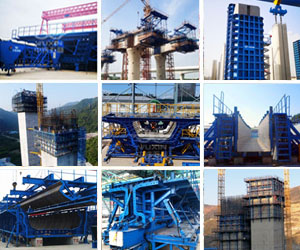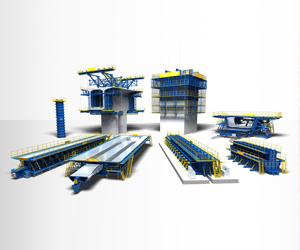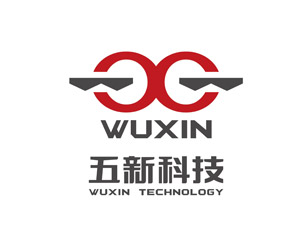Pier formwork
Pier formwork is a temporary or permanent structure used to mold and support concrete during the construction of piers or columns. Piers are vertical load-bearing structures, commonly used in bridges, overpasses, and high-rise buildings. Proper formwork ensures that the concrete sets in the desired shape, achieves structural integrity, and supports the intended loads.
Components of Pier Formwork
Form Panels: These are the surfaces that come in direct contact with the concrete. They are usually made from materials like plywood, steel, aluminum, or fiberglass.
Supports and Braces: Provide stability and ensure the formwork remains in place during concrete pouring and curing. These include vertical supports, horizontal braces, and diagonal struts.
Tie Rods and Anchors: Keep the formwork aligned and prevent it from bulging under the pressure of wet concrete.
Scaffolding or Access Platforms: Facilitate safe access for workers during assembly, pouring, and removal of the formwork.
Release Agents: Applied to the interior surfaces of the formwork to ensure easy removal once the concrete has set.
Types of Pier Formwork
Conventional Formwork: Uses timber or plywood and is suitable for projects with simpler designs or smaller piers.
Steel Formwork: Offers durability and reusability, making it ideal for repetitive work and large-scale projects.
Jump Form or Climbing Formwork: Used for taller piers or structures where the formwork is moved upwards in stages as construction progresses.
Slip Formwork: Continuously moves upward while concrete is poured, suitable for very tall and slender piers.
Precast Formwork: Employs prefabricated molds to form sections of piers offsite, which are then transported and installed on-site.
Advantages of Pier Formwork
Precision: Ensures accurate dimensions and shapes of the piers.
Efficiency: Reduces construction time when using advanced systems like climbing or slip formwork.
Safety: Provides a stable working platform for laborers.
Durability: High-quality materials like steel or fiberglass ensure long-term use in multiple projects.
Key Considerations for Pier Formwork
Load Capacity: Formwork must withstand the pressure exerted by wet concrete and any additional live loads during construction.
Design Compatibility: Must suit the specific shape and dimensions of the pier.
Ease of Assembly and Disassembly: To minimize labor and construction time.
Surface Finish: The choice of formwork material impacts the smoothness of the concrete surface.
Cost-Effectiveness: Balancing initial investment with durability and reusability.









